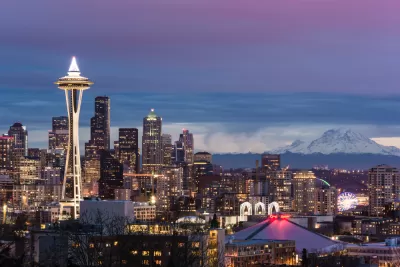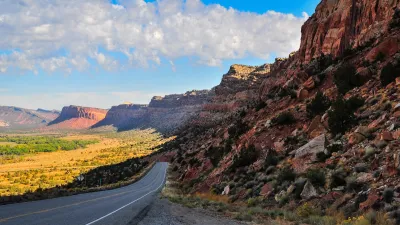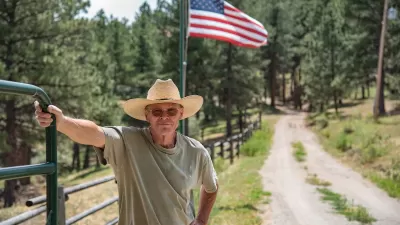The New York Times Opinion Pages present a new narrative for the American West: "A wounded piece of land can be made whole, if managed for the future by people whose capacity for wonder is limitless."

"The big story of the West today is how the urban and the wild have produced a unique lifestyle — a new-century ecosystem. Each depends on the other. And the lands, though badly scarred during the last century, are being restored, showing the power of people to mend places they love," writes Timothy Egan.
"This is not to say there aren’t endangered plants and animals, drought-shriveled grasslands, oil-plundered prairies or entire forests killed by a surfeit of beetles in a climate-changed West. But another narrative is more compelling."
Egan cites the example of Seattle, with a metro area of 3.7 million people, access to three national parks, and, recently, the largest dam-removal project ever. Also cited is the example of Tucson, with access to Saguaro National Park, and Las Vegas, with the Red Rock Canyon National Conservation Area.
Then there is this gem of a passage, among many more: "The modern West is the most urbanized part of the United States. About 90 percent of Westerners live in areas defined by the census as urban. Utah, where most people live along the Wasatch Mountain Front, is slightly more urban than New York State, with its empty reaches in the north. Ronald Reagan was probably the last of the costume cowboys to fool Easterners into thinking that everyone who lives here is saddle sore. Sure, Cliven Bundy, the deadbeat rancher with the 19th-century racial views, was a hero to the clueless indoorsmen of Fox News. Everyone else was appalled."
FULL STORY: New West Renaissance

Alabama: Trump Terminates Settlements for Black Communities Harmed By Raw Sewage
Trump deemed the landmark civil rights agreement “illegal DEI and environmental justice policy.”

Study: Maui’s Plan to Convert Vacation Rentals to Long-Term Housing Could Cause Nearly $1 Billion Economic Loss
The plan would reduce visitor accommodation by 25% resulting in 1,900 jobs lost.

Planetizen Federal Action Tracker
A weekly monitor of how Trump’s orders and actions are impacting planners and planning in America.

Wind Energy on the Rise Despite Federal Policy Reversal
The Trump administration is revoking federal support for renewable energy, but demand for new projects continues unabated.

Passengers Flock to Caltrain After Electrification
The new electric trains are running faster and more reliably, leading to strong ridership growth on the Bay Area rail system.

Texas Churches Rally Behind ‘Yes in God’s Back Yard’ Legislation
Religious leaders want the state to reduce zoning regulations to streamline leasing church-owned land to housing developers.
Urban Design for Planners 1: Software Tools
This six-course series explores essential urban design concepts using open source software and equips planners with the tools they need to participate fully in the urban design process.
Planning for Universal Design
Learn the tools for implementing Universal Design in planning regulations.
Caltrans
Smith Gee Studio
Institute for Housing and Urban Development Studies (IHS)
City of Grandview
Harvard GSD Executive Education
Toledo-Lucas County Plan Commissions
Salt Lake City
NYU Wagner Graduate School of Public Service




























